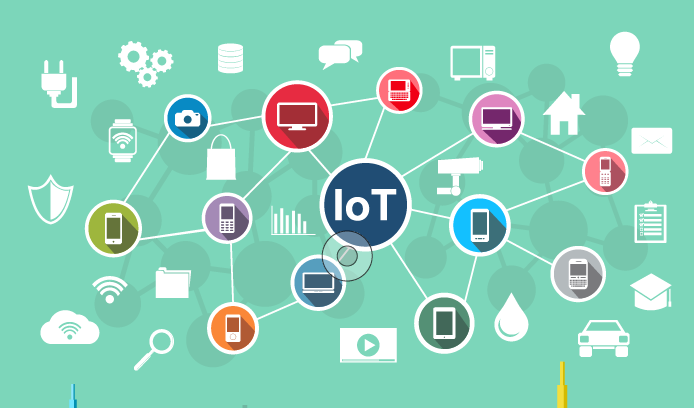Internet of Things
In a nutshell, the Internet of Things is the concept of connecting any device (so long as it has an on/off switch) to the Internet and to other connected devices. The IoT is a giant network of connected things and people – all of which collect and share data about the way they are used and about the environment around them.
That includes an extraordinary number of objects of all shapes and sizes – from smart microwave, which automatically cook your food for the right length of time, to self driving cars, whose complex sensors detect objects in their path, to wearable fitness devices that measure your heart rate and the number of steps you’ve taken that day, then use that information to suggest exercise plans tailored to you. There are even connected footballs that can track how far and fast they are thrown and record those statistics via an app for future training purposes.

How it works?
An IOT ecosystem consists of web-enabled smart devices that use embedded processors, sensors and communication hardware to collect, send and act on data they acquire from their environments. IOT devices share the sensor data they collect by connecting to an IoT gateway or other edge device where data is either sent to the cloud to be analyzed or analyzed locally. Sometimes, these devices communicate with other related devices and act on the information they get from one another. The devices do most of the work without human intervention, although people can interact with the devices — for instance, to set them up, give them instructions or access the data.
The connectivity, networking and communication protocols used with these web-enabled devices largely depend on the specific IOT applications deployed .
Advantages of IOT devices
There are several advantages of these smart devices and some of them are given below.
- IoT encourages the interaction between devices called as a machine to machine interaction.
- It provides good automation and control.
- Integrated with more technical information, so it is better to operate.
- IoT possesses strong monitoring feature.
- It saves a lot of time.
- IoT helps to save more money by reducing manual task and time.
- Automating daily life tasks makes good monitoring of devices.
- Increased efficiency and time-saving.
- With good features make a better quality of life.
Disadvantages
Though there are several advantages, there are certain disadvantages too.
Enlisted below are the various demerits:
- Internet of Things devices does not have any international compatibility standard.
- They may become highly complex resulting in failure.
- Internet of Things devices may get affected by privacy and security breach.
- Reduced safety for users.
- Reduction in the employment of manual tasks thus resulting in job reductions.
- Internet of Things device may take control of life in due course of time with increasing AI technology.
